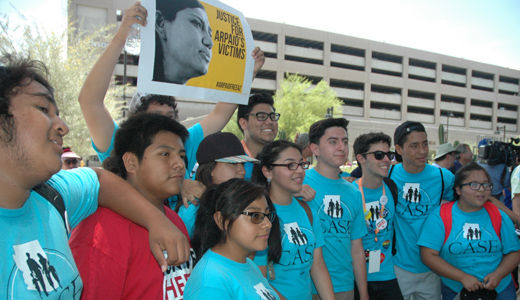
With the general election inching closer, the public is beginning to see some of the uglier sides of politics coming out of the woodwork this summer. Just last month, before the opening of the Democratic National Convention, it was announced that Debbie Wasserman Schultz was leaving her position as head of the Democratic National Committee. Her resignation was triggered by a scandal involving Wikileaks, which released 20,000 emails showing that Wasserman Schultz and members of her team were actively undermining the Sanders campaign. One message even suggested planting a narrative that portrayed the Sanders platform as a disorganized “mess.”
This is not the first email controversy coming out of this election. For months, Hillary Clinton remained under the scrutiny of an extensive FBI investigation over deleted emails. Despite this barrier, Clinton has proven to be a force to reckon with. The Democrats pulled every play in the political book during the DNC, bringing in celebrities and the mothers of young black men and women who had been shot at the hands of police. Both Michelle and Barack Obama also publicly endorsed Clinton in separate speeches, and spoke fondly of their personal faith in her leadership abilities.
For what it was worth, reports indicated afterwards that Clinton’s speech was ultimately viewed more favorably than Trump’s, and her numbers jumped. 60% of viewers in one CNN/ORC poll stated they were more likely to vote for Clinton after watching her address.
Positive poll numbers aside, however, the fact still remains that the Democratic Party has long taken their diverse following of voters for granted – something they can no longer do. If the party wants to win over young voters of color, for instance, they will have to work hard to get those votes. They should not count on any free handouts.
Which way for the millennial vote?
With Sanders out of the race, many have speculated about what direction the millennial vote will go, and in particular, the votes of young people of color. A study conducted by the Pew Research Center estimated that this year’s election will be the country’s most racially and ethnically diverse ever. Nearly one-in-three eligible voters on Election Day, 31 percent, will be Hispanic, black, Asian or another racial or ethnic minority, inching up from 29 percent in 2012.
Obama’s success throughout his presidential campaigns was largely a result of record-breaking turnout, particularly among African Americans. More than 130 million people voted in 2008 – the most ever in a presidential election. Additionally, the 2012 campaign against Romney marked the first time that African American voters turned out at a higher percentage than white voters in a presidential election.
It seems clear that in order for Clinton to pull off a solid victory, she must continue to reach out to marginalized populations and ensure that Black, Latinx, and Asian millennial votes are being represented. She has already established herself as a frontrunner with black voters, having won more than 70 percent of the African-American vote in most of the primary and caucus states with considerable African-American populations. She is statistically a favorite among an older generation of black voters, and has already begun to cement her position by speaking at Al Sharpton’s National Action Network, for instance, and continuing to make appearances at black-based events.
But securing a win for the 2016 election will require Democrats to begin regaining the public trust and taking responsibility for the political dishonesty fostered within the DNC’s electoral politics.
Democrats should take no one for granted
Of course, Democrats are not the only ones struggling to maintain a positive public image. Many conservatives have jumped ship from the sinking Trump Titanic, with rumors that the GOP is even looking for alternative options in case Trump drops out.
Liberal and conservative voters alike have felt gridlocked within the confines of a two-party system that does no longer truly represent their ideological beliefs. First-year Loyola University MBA student Daniel Cavero told the People’s World that although he voted for John Kasich in the primaries, he does not believe he will be voting in the general election. “I don’t feel like I can truly voice my opinion through either candidate. I also don’t want to fall in the boat where I’m forced to pick between two candidates. I will probably just vote locally during the elections.”
This form of political defiance resonates with many young voters, who have historically been known for opting out of the electoral process.
On another level, some progressive organizations have also decided against endorsing any presidential candidate for the 2016 election. Black Lives Matter co-founder Alicia Garza told The Guardian recently that she believes it’s impossible to rally around anyone “who hasn’t demonstrated that they feel accountable to the Black Lives Matter movement or network.” She also expressed concern that politicians would attempt to co-opt movements for their own political gain.
It seems that youth more broadly share similar concerns, as polls in recent years have shown a historically low level of trust for the government among millennials. This may be part of the reason why they continue to have the lowest voter turnout of any age group. Only 46 percent of them showed up for the last presidential election; compared to 72 percent of the Silent Generation (age 71 and up).
There are others, however, who feel as though they have no choice but to vote, regardless of the uncertainty surrounding existing candidates. “I won’t opt out of any election. It took too long to get that right. Even today there are states trying to limit that right with voter ID laws,” said Shayla Glover, an educator from Columbus, Ohio. “I think even if people are unhappy about the choices on the presidential ticket, they still need to vote. 1/3 of the Senate is up for re-election and all of the House. If people chose to not vote for any candidate for president, I can respect that, but do vote for your local elections.”
Latinx voters find themselves at a similar crossroads. For the most part, Clinton has banked on Trump’s overwhelming unpopularity among Latinx communities. Yet, she herself has been part of an administration with higher deportation rates than any other in history. She has even defended President Obama on the matter, stating that “there are laws that impose certain obligations” on the President.
Clinton has shifted some of her thoughts on undocumented immigration, though, pledging in March not to deport any undocumented immigrants except in the case of violent criminals and terrorists. Many wonder, however, whether she will hold true to her word.
What next?
The more important question becomes: what happens next?
There are sectors of previous Sanders supporters who have decided they will stick to their anti-establishment ideals. A few will supposedly throw their support behind Trump. Others will back Green Party candidate Jill Stein. Nine out of ten, however, have stated that they will eventually end up voting for Clinton.
In the meantime, the nation is coming to understand the importance of addressing the critical issues stemming from systemic injustice. It is no longer acceptable to simply overlap racial and class discourse into a conglomerate discussion. Rather, it is necessary to directly examine the individual needs of black and brown communities.
Though Clinton may have her work cut out for her, there is still time for the Democratic Party to redeem itself and prove that the nation can truly represent even the most underrepresented of voices.
Photo: Local activists and attendees at Netroots Nation 15 March in to Phoenix Sheriff’s Department demanding Sheriff Joe Arpaio be arrested. Earchiel Johnson | PW









Comments